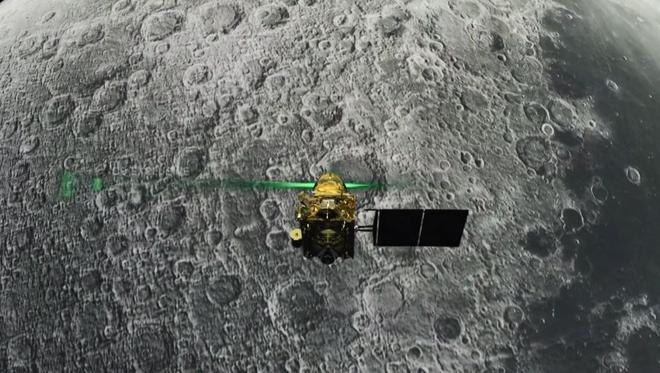Context
-
The CHACE-2 Mission i.e. Chandra’s Atmospheric Composition Explorer-2 is a quadrupole mass spectrometer onboard Chandrayaan-2 mission has made the first-of-its-kind observations of the global distribution of Argon-40 in the tenuous lunar exosphere.
-
These observations provide insight on the dynamics of the lunar exospheric species, as well as on the radiogenic activities in the first few tens of meters below the lunar surface.
About CHACE-2 Mission
- The CHACE-2 observations provide the diurnal and spatial variation of Ar-40 covering the equatorial and mid latitude regions of the Moon. The uniqueness of this result from Chandrayaan-2 mission lies in the fact that although Apollo-17 and LADEE missions have detected the presence of Ar-40 in the lunar exosphere, the measurements were confined to the near-equatorial region of the Moon.
- CHACE-2 observations reveal an increase in the number density of Ar-40 near the sunrise terminator, a decrease through the dayside, a secondary peak near sunset terminator and a night-side minima. This is the typical behaviour of a condensable gas.
- CHACE-2 was a sequel to the CHACE experiment on the Moon Impact Probe (MIP) of Chandrayaan-1 mission and also draws heritage from the Mars Exospheric Neutral Composition Analyser (MENCA) experiment aboard the Indian Mars Orbiter Mission.
-

Photo Credit: AFP Further, the distribution in Ar-40 has significant spatial heterogeneity.
- There are localised enhancements (termed as Argon bulge) over several regions including the
- KREEP [potassium (K), rare-earth elements, and phosphorus (P)],
- South Pole Aitken terrain.
- Presence of Argon bulge are indicative of unknown or additional loss processes, Moon quakes or regions with lower activation energies.
Back to Basics
About Argon-40
- Noble gases serve as important tracers to understand the processes of surface-exosphere interaction.
- Argon-40 (Ar-40) is such an important tracer atom to study the dynamics of the lunar exospheric species.
- An inert, colorless and odorless element, Argon is a noble gas. The vast majority of Argon on Earth is the isotope Argon-40.
- Ar-40 originates from the radioactive disintegration of Potassium-40 (K-40) present below the lunar surface.
- [The production of argon-40 from potassium-40 decay is utilized as a means of determining Earth’s age (potassium-argon dating).]
- Once formed, Ar-40 diffuses through the inter-granular space and makes way up to the lunar exosphere through seepages and faults.
About Exosphere
- ‘Exosphere’ is the outermost region of the upper atmosphere of a celestial body where the constituent atoms and molecules rarely collide with each other and can escape into space.
- Earth’s Moon features a surface-boundary-exosphere. For Moon, different constituents in the exosphere are fed from the surface by a variety of processes, such as thermal desorption, solar wind sputtering, photo-stimulated desorption, and micrometeorite impact vaporization.
- The exospheric atoms may be lost to space by the thermal escape (also known as the Jean’s escape).
- Also, the atoms get ionized by photo-ionization and charge exchange with the solar wind ions. Subsequently, they can be swept away by the convective electric field of the solar wind. Some of these atoms/ions can also be deposited back on the lunar surface.
- Thus, the lunar exosphere exists as a result of a dynamic equilibrium between several source and sink processes.
Source: ISRO
Visit Abhiyan PEDIA (One of the Most Followed / Recommended) for UPSC Revisions: Click Here
IAS Abhiyan is now on Telegram: Click on the Below link to Join our Channels to stay Updated
IAS Abhiyan Official: Click Here to Join
For UPSC Mains Value Edition (Facts, Quotes, Best Practices, Case Studies): Click Here to Join
